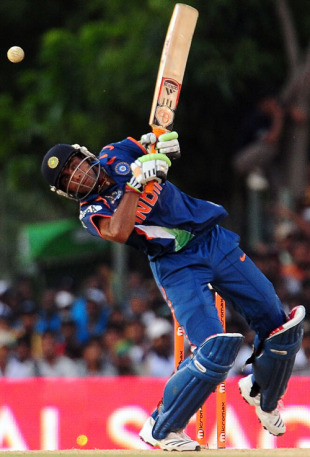
It's six months to go to the World Cup - a long time if you are preparing for the staging of the Commonwealth Games, not quite if you are looking at the best possible combination to put together for the biggest cricket event in the world. Coaches and selectors must be hoping to have at least 10 or 11 names finalised by now, and really should have a fair idea of who the other four or five will be. A wish list would be in every coach's back pocket.
India's wish list is pretty obvious really, and a first reading will expose the biggest problem with it. Ideally this is what I suspect Kirsten and Dhoni and Srikkanth would be looking at the evening before the first game: SachinTendulkar, Virender Sehwag, Gautam Gambhir, Yuvraj Singh, Mahendra Singh Dhoni, Suresh Raina, Irfan Pathan, Harbhajan Singh, Praveen Kumar or Ashish Nehra, Zaheer Khan, Pragyan Ojha. Eleven of those 12 names look settled, but for India to be strong at the World Cup, No. 7 needs to be identified, and at the moment Irfan Pathan has gone underground.
So if Pathan Jr is not on the radar, who bats after the batsmen and above the bowlers and gives you a few, if not 10, overs? India have tried Pathan Sr - and I suspect he is still an option - and currently are investing heavily in Ravindra Jadeja, who has so far given little indication of becoming the rock star Shane Warne thought he could be. "Could be" is the operative phrase here. Early in his career Jadeja seems to have stagnated, and I suspect people will start looking for returns on investment very shortly.
I also suspect India's think tank will have started thinking seriously about a Plan B. They will need one because there is no No. 7 who answers to the job description anywhere in sight in India. You'd think the IPL would have thrown up a couple of names, but really, apart from R Ashwin, who seems better with the new ball than with the old at the moment, the canvas is blank.
| A bits-and-pieces player policy tends to be fraught with danger because you run the risk of getting neither a bowler nor a batsman, and so India need to play to their strength, which on Indian pitches is batting | |||
And so I suspect India might have to go the way they did during that very successful run from 2002 to 2004, when the selfless Rahul Dravid took the gloves and allowed India to play a seventh batsman. Straightaway you can see Rohit Sharma playing the role that Mohammad Kaif did then, with the license to bat freely in case the team is in a good situation, and instructed to douse the fires if there is a batting collapse.
But what looks good in the mind and on paper need not necessarily be the same way on the field. So who bowls the other 10 overs? Or more if one of the bowlers has had a bad day? It's time, then, to ask the batsmen to start rolling their arms over. In home conditions that isn't such a daunting task. Sehwag is a very competent offspinner (remember Aravinda De Silva bowling 10 overs quite often in 1996?) and Yuvraj Singh is much underrated. But I think it is time to look even further afield and start throwing the ball to Suresh Raina, who seems to possess a pretty cool head when bowling in the 20-overs game. Or, for that matter, to Rohit Sharma, who can be good for a few overs.
A bits-and-pieces player policy tends to be fraught with danger because you run the risk of getting neither a bowler nor a batsman, and so India need to play to their strength, which on Indian pitches is batting. Four players to generate 10 overs between them shouldn't be a huge issue.
I am not sure that is the way the think tank is thinking at the moment, but if No. 7 remains elusive even after the Sri Lanka tri-series, it might be the right time to start asking the batsmen if they fancy six-over spells in limited-overs cricket. My gut feel is that they will jump at the opportunity.
India have eight one-day games in home conditions before the World Cup. They must know what they want at the World Cup before those games begin.
0 comments:
Post a Comment